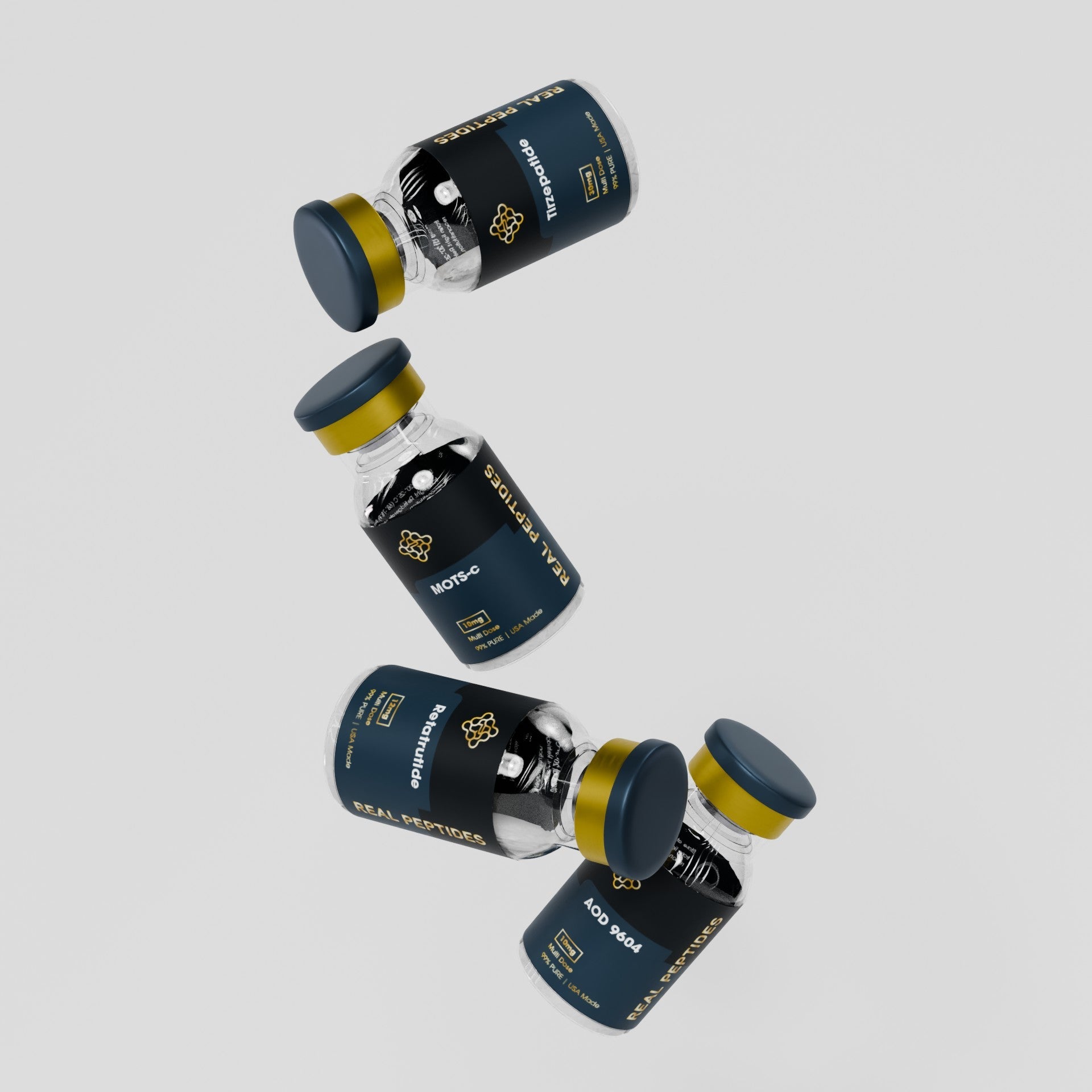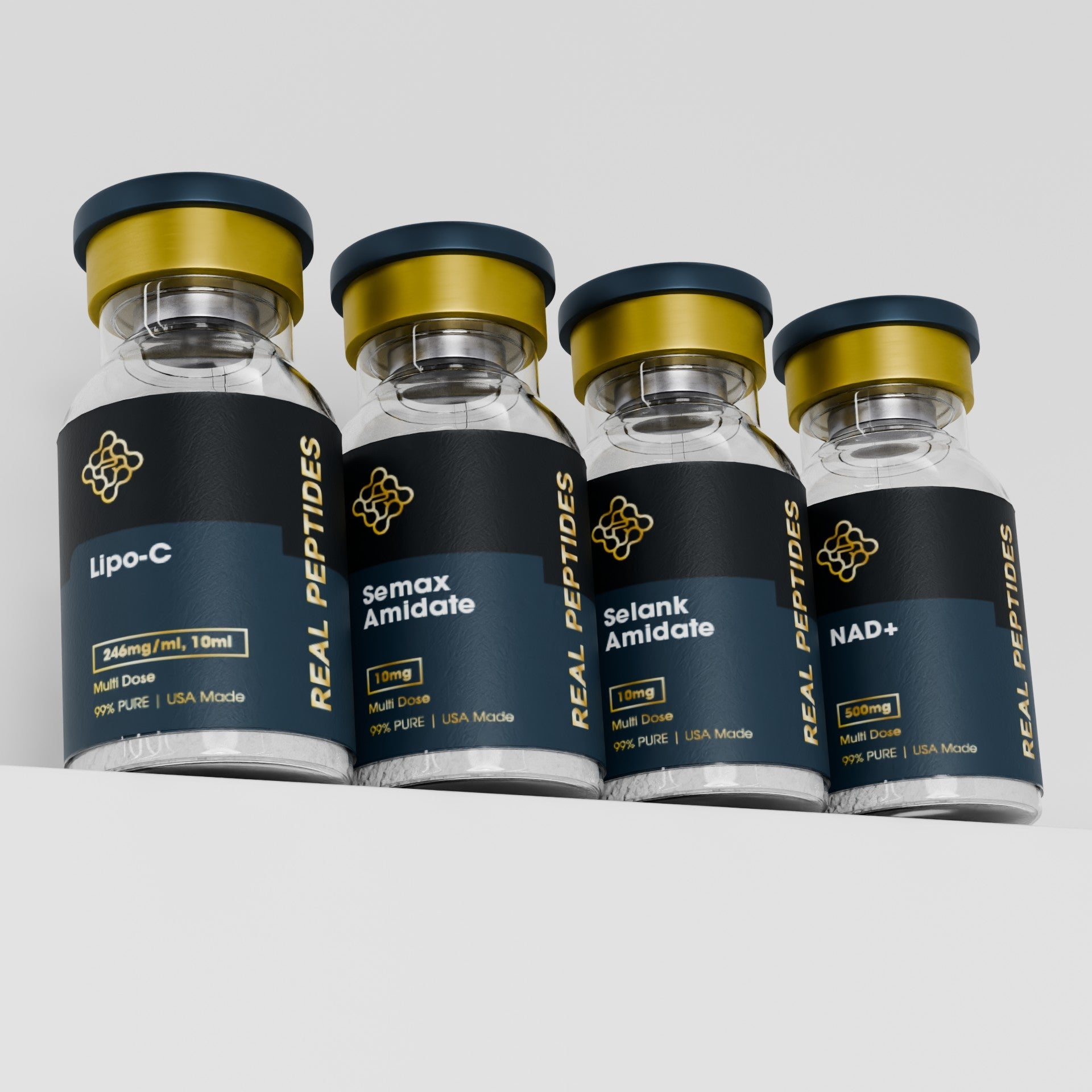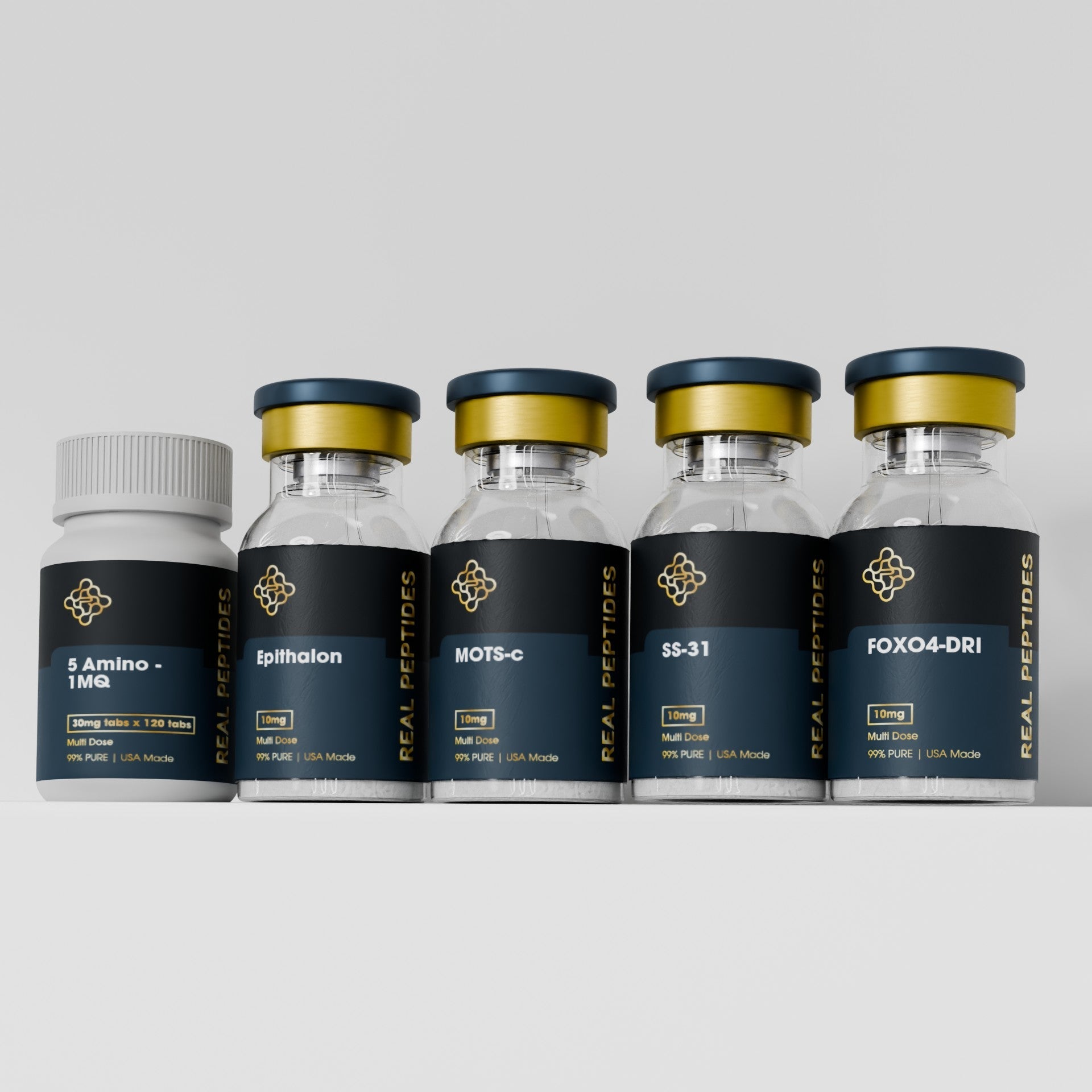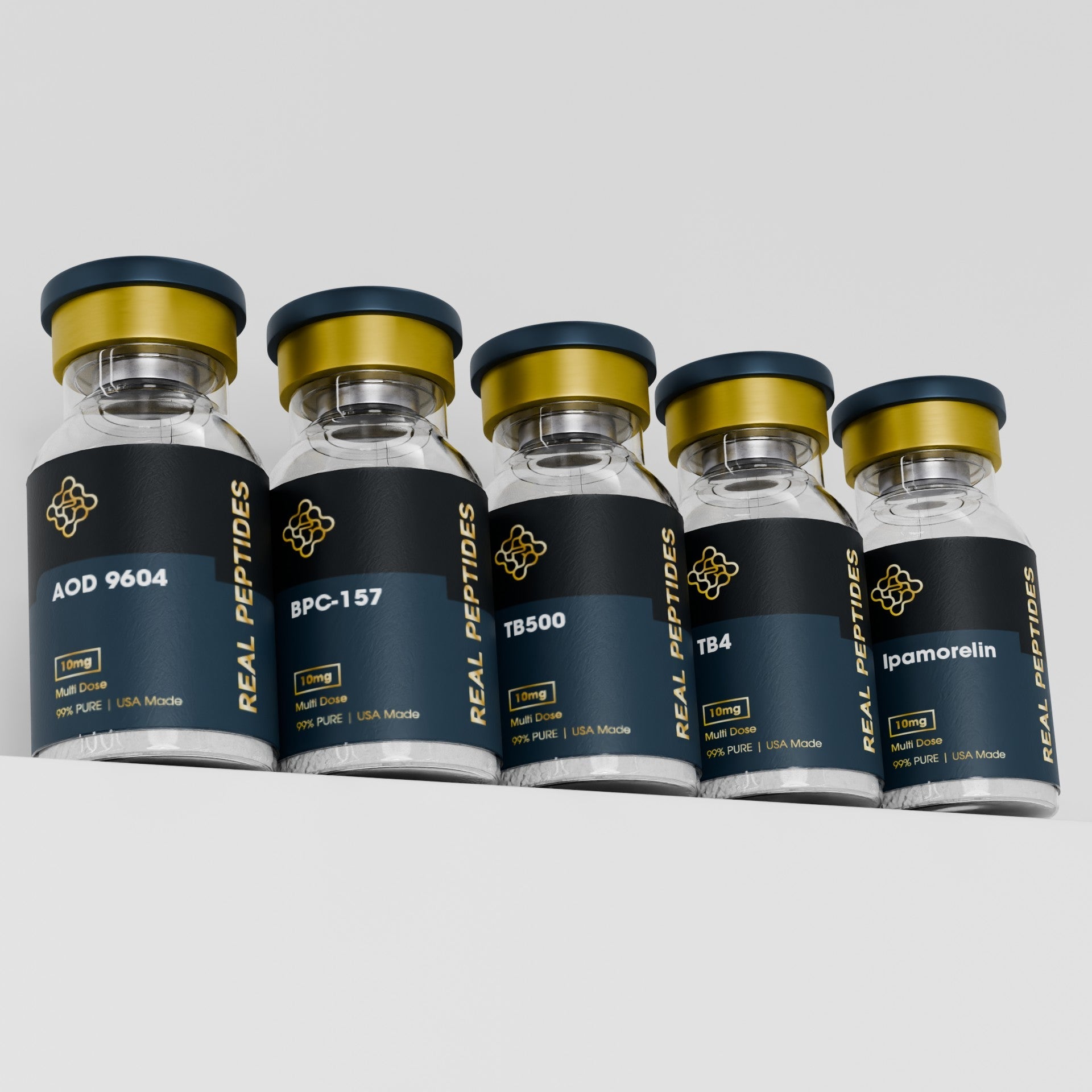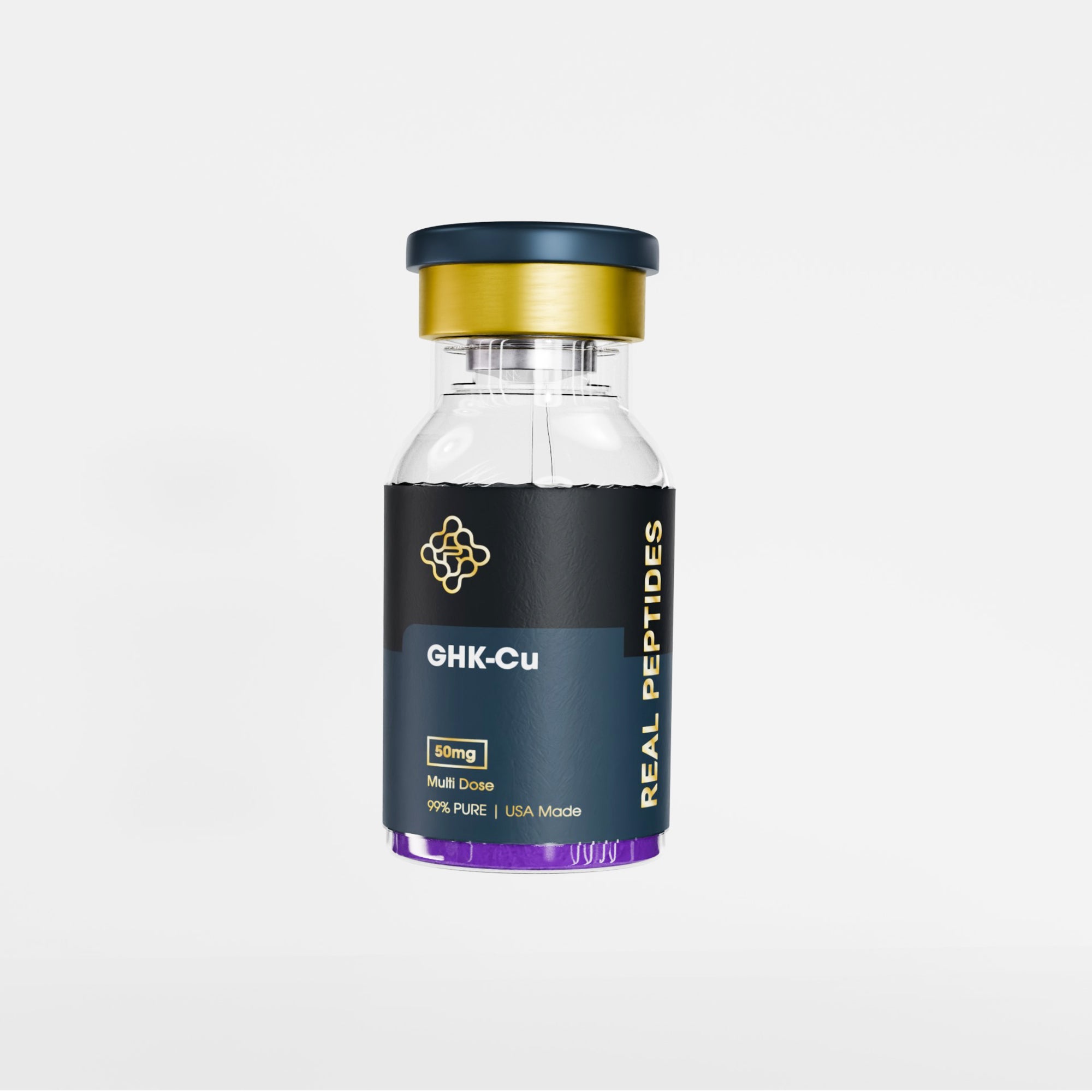
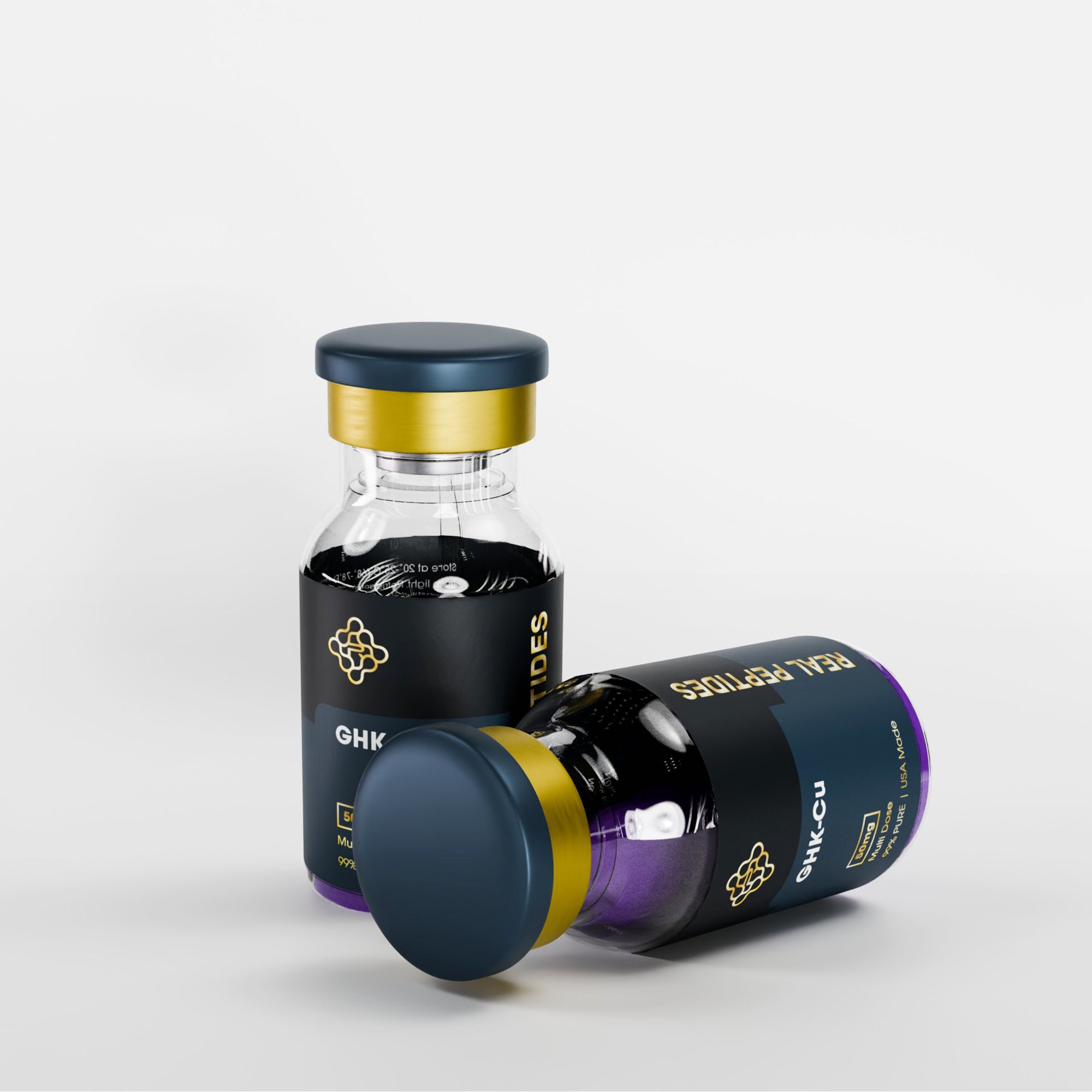
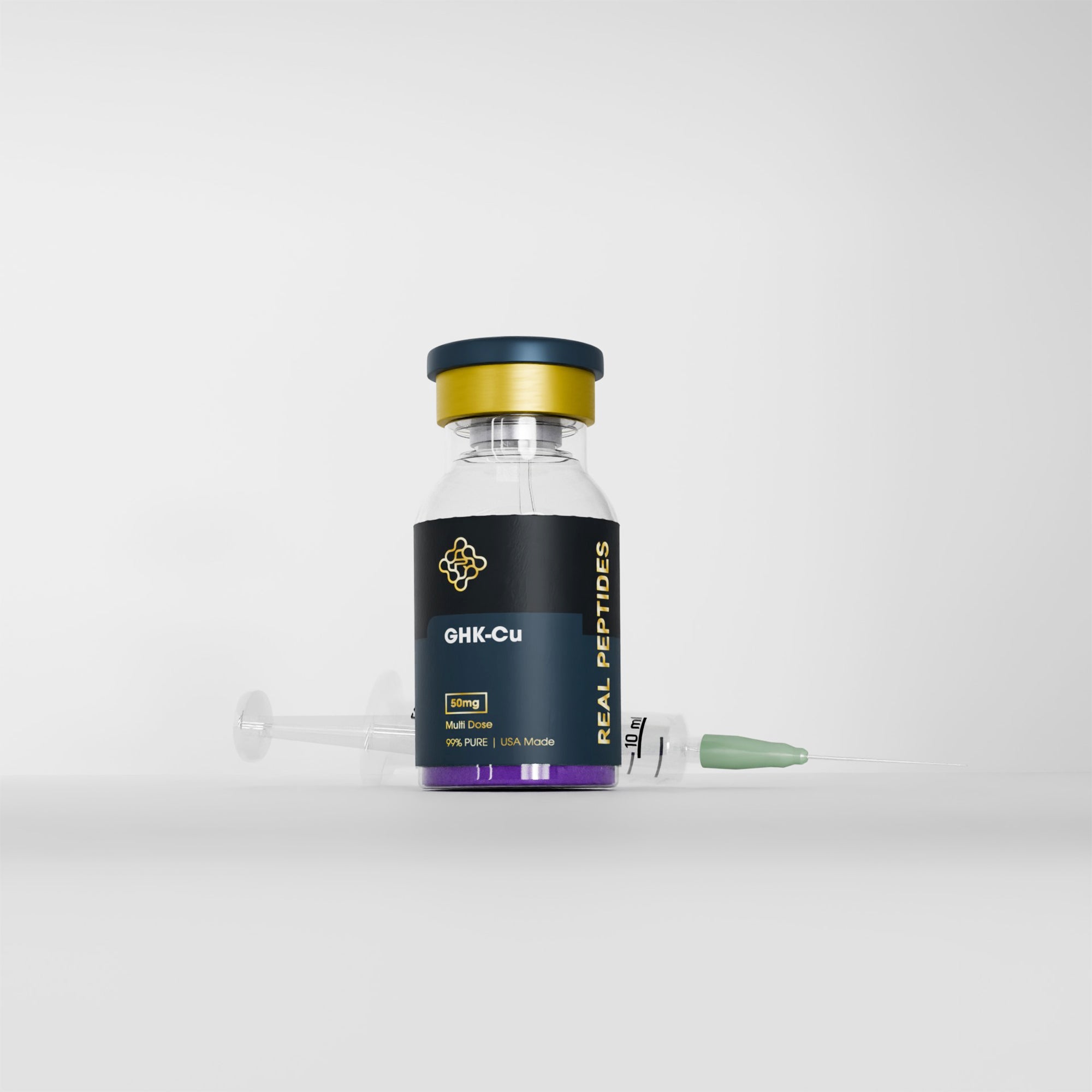
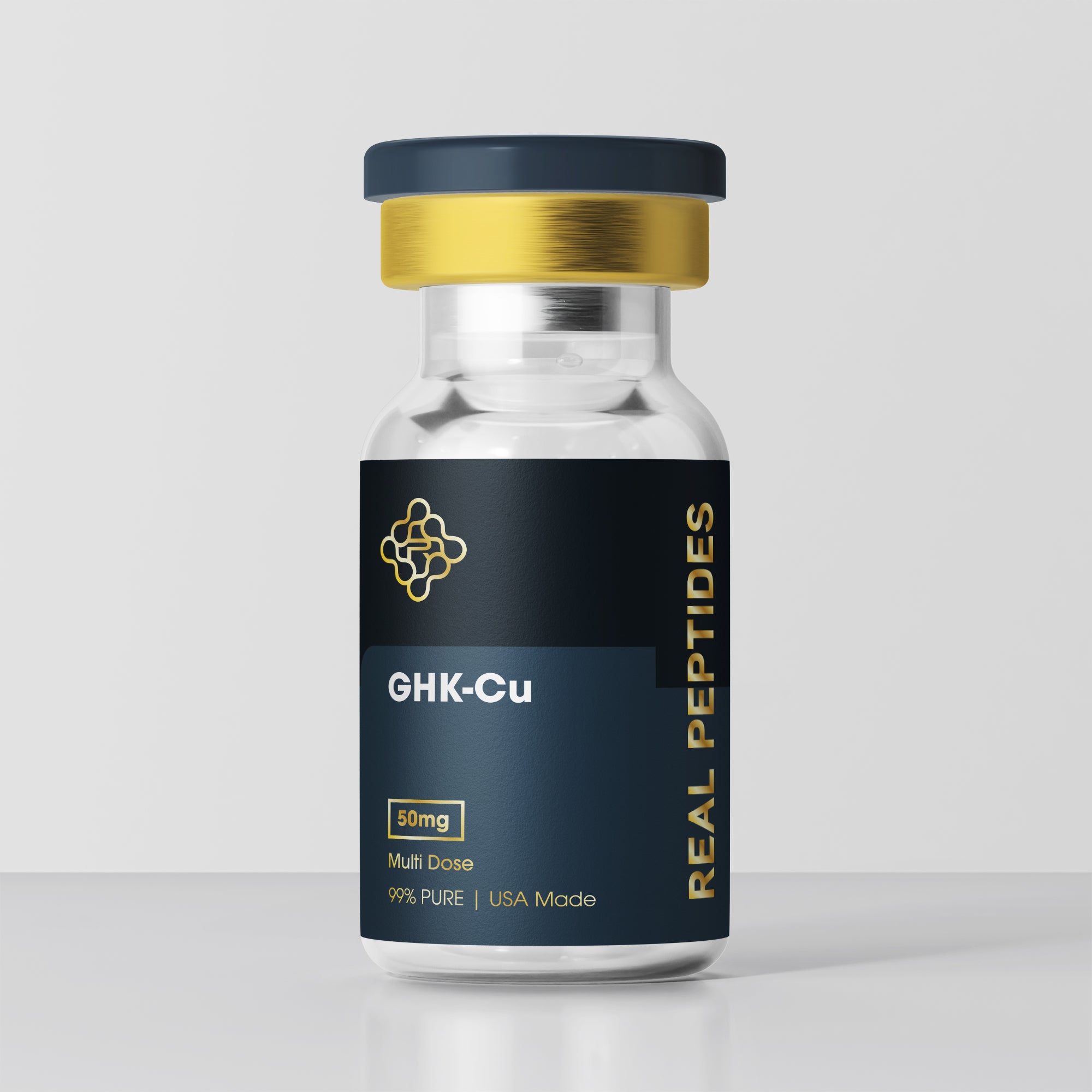

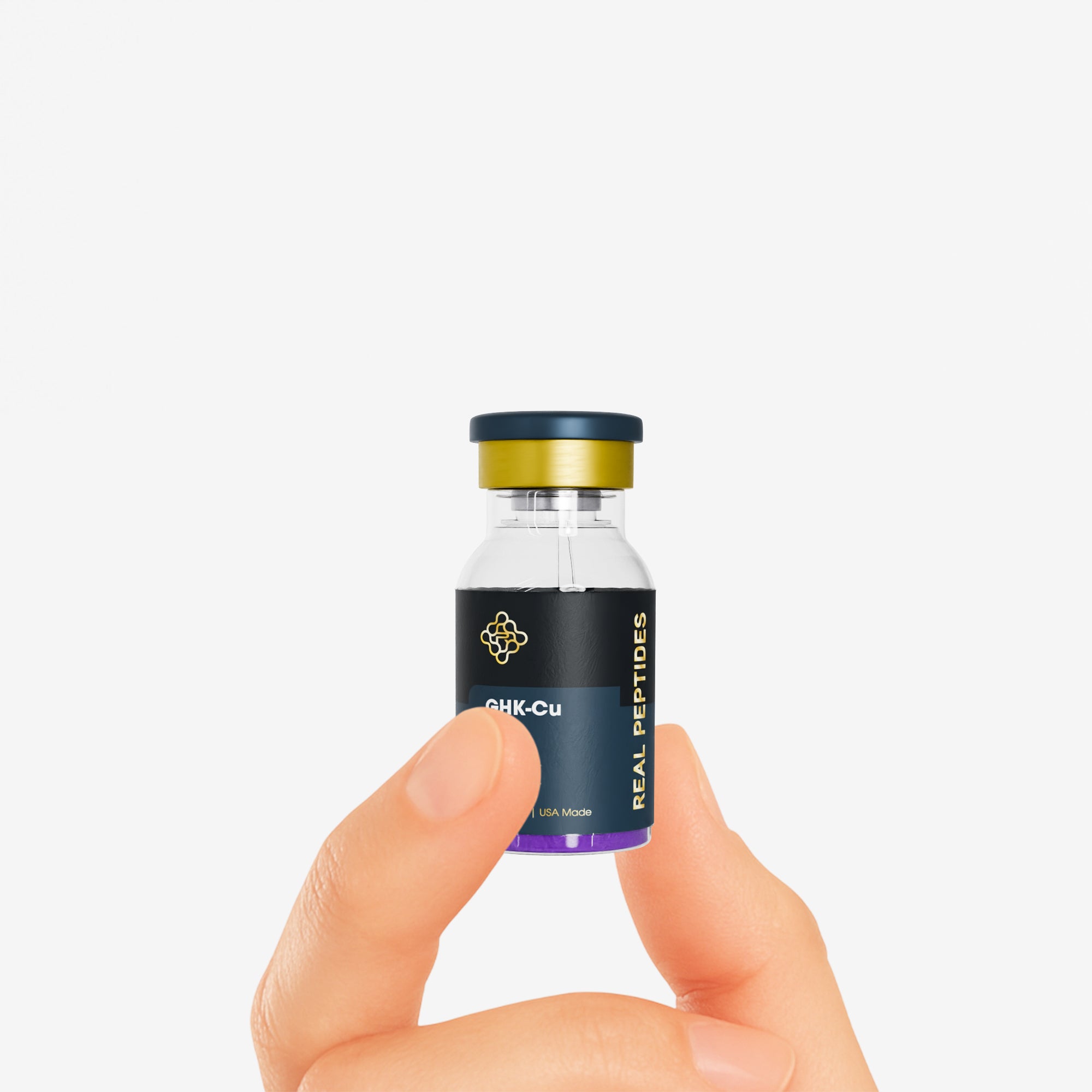

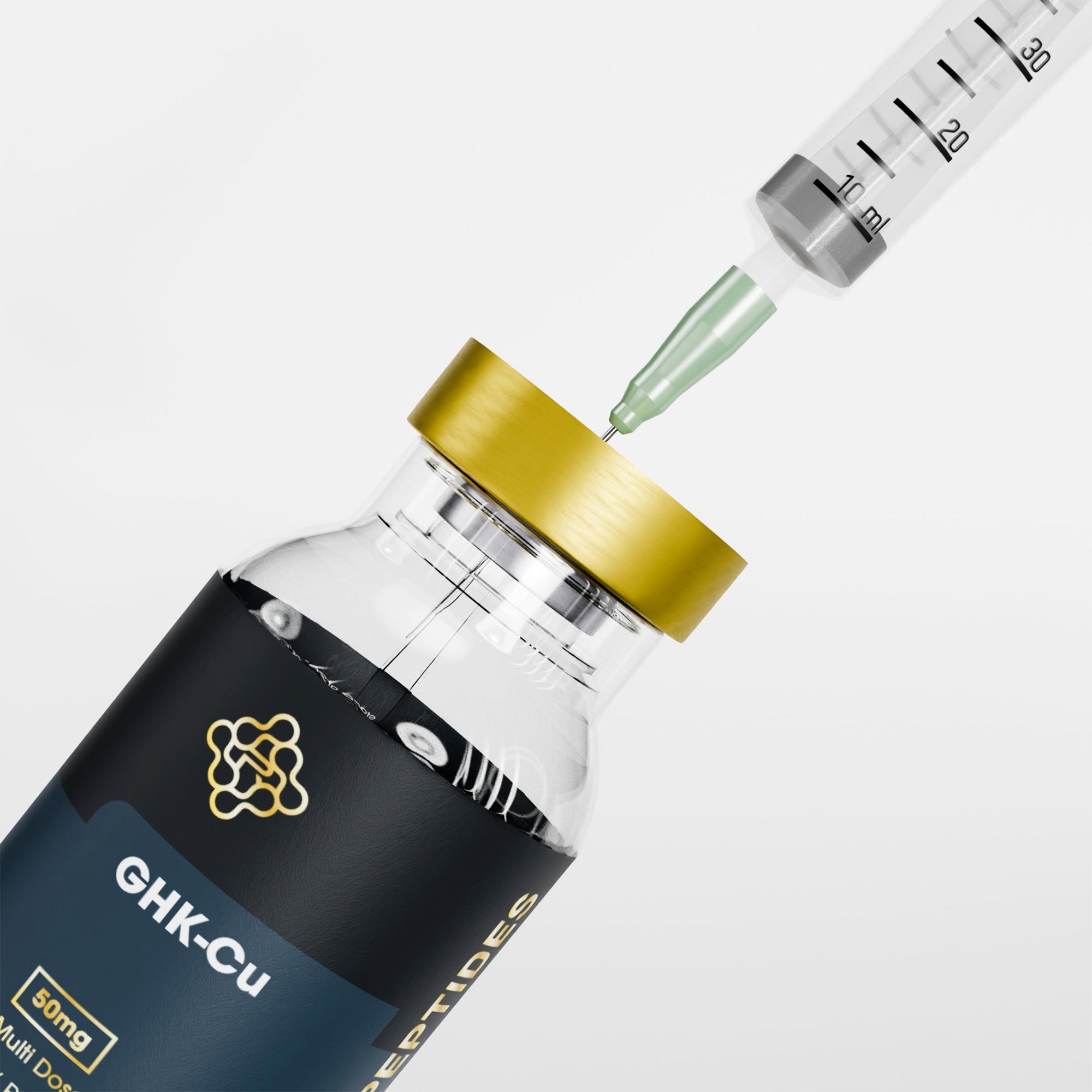
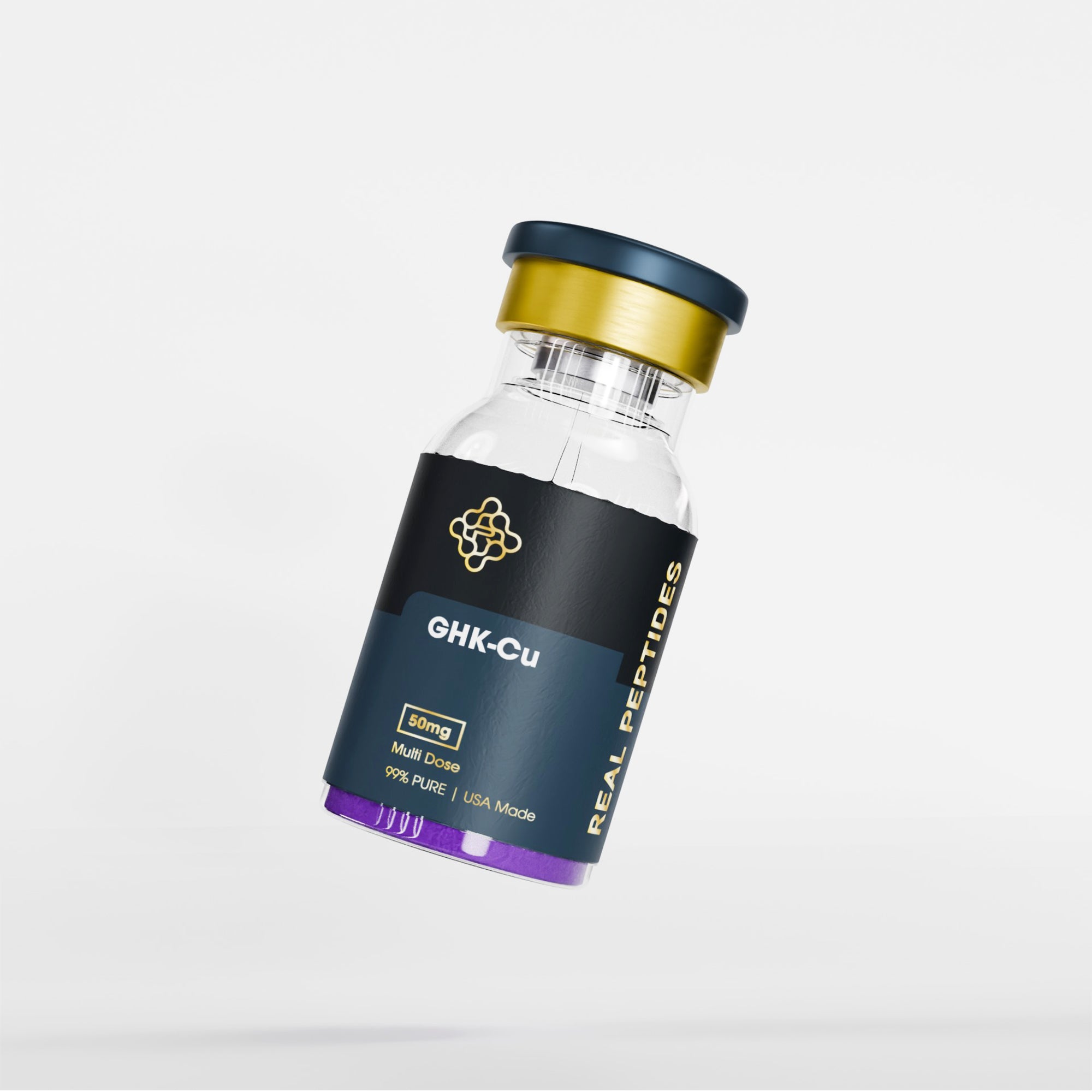
GHK-Cu Copper Peptide
GHK-Cu is a three-amino-acid peptide (Gly-His-Lys) chelated to copper that labs use to investigate collagen remodeling, angiogenesis, and hair-follicle activation in cell and tissue models. It supports studies of skin-firming, wound-closure rates, and follicular health without systemic hormone effects. Each 50 mg vial is USA-manufactured, HPLC-verified to ≥ 99% purity, endotoxin-screened (< 0.1 EU/mg), and supplied with detailed handling guidelines.
⚠️ Important Disclaimer
For Research Use Only. Not for human consumption or therapeutic treatment.
Pairs well with
Peptides are not ready to use. Must purchase BAC water for reconstitution.

GHK-Cu Copper Peptide
GHK-Cu
KEY HIGHLIGHTS
Collagen Synthesis Boost
GHK-Cu increases Type I and III collagen production in human fibroblast assays, modeling skin-repair protocols.
Angiogenic Signaling
In endothelial cultures, GHK-Cu elevates VEGF expression and capillary-tube formation for vascular-growth studies.
Hair-Follicle Activation
GHK-Cu stimulates dermal papilla cell proliferation and hair-shaft thickening in rodent follicle models.
Anti-Inflammatory Modulation
GHK-Cu downregulates pro-inflammatory cytokines (IL-1β, TNF-α) in keratinocyte assays, aiding wound-healing research.
Antioxidant Enzyme Upregulation
Enhances superoxide dismutase (SOD) activity and lowers reactive oxygen species in oxidative-stress models.
Lab-Friendly Prep & Storage
Reconstitute in Sterile Water for Injection (SWFI) or Bacteriostatic Water (BAC); store lyophilized at – 20 °C and reconstituted at 2–8 °C for up to 7 days to maintain ≥ 98% integrity.


What Is GHK-Cu?
GHK-Cu (Copper Tripeptide-1) is a small, three-amino-acid research peptide (Gly–His–Lys) complexed with a single copper ion. In preclinical and cell-culture models, GHK-Cu serves as a precision tool for studying extracellular matrix remodeling, microvascular growth, and hair-follicle biology. By mimicking natural copper-binding sequences, it supports detailed exploration of collagen synthesis, endothelial signaling, and antioxidant enzyme activation—without engaging systemic hormonal pathways.

Why Choose GHK-Cu?
Researchers turn to GHK-Cu when they need a dual-action peptide that simultaneously drives tissue-repair and oxidative-stress mitigation. Its compact tripeptide structure ensures rapid diffusion into fibroblast, keratinocyte, and endothelial models, while its copper chelate enables robust activation of lysyl oxidase and superoxide dismutase. Manufactured under ISO-certified conditions and verified to ≥ 99% HPLC purity with strict endotoxin screening, GHK-Cu delivers consistency and reproducibility—essential for high-impact skin, wound-healing, and hair-regeneration studies.

What Sets GHK-Cu Apart?
Unlike generic copper salts or longer peptide fragments, GHK-Cu uniquely combines copper-mediated enzyme activation with peptide-driven signaling in a single molecule. Its proven ability to upregulate both collagen I/III and VEGF-driven angiogenesis in vitro, plus its potent antioxidant effects in ROS-challenged cultures, makes it an exceptionally versatile research reagent. With demonstrated stability in both lyophilized and reconstituted forms, GHK-Cu stands out as the go-to peptide for labs seeking precise, multi-pathway insights into regenerative and vascular biology.
GHK-Cu FAQs
What is GHK-Cu peptide used for in research?
GHK-Cu is used to study collagen production, angiogenesis, and hair-follicle activation in cell and tissue models.
How does GHK-Cu promote skin repair?
It upregulates collagen I/III synthesis and modulates growth-factor signaling to accelerate wound-closure assays.
Can GHK-Cu stimulate hair growth?
In preclinical models, GHK-Cu stimulates dermal papilla cell proliferation and increases hair-shaft thickness.
What concentration is typical for GHK-Cu studies?
Researchers often use 100 nM–10 µM in vitro, adjusted per assay and cell type.
How is GHK-Cu reconstituted?
Dissolve in Sterile Water for Injection (SWFI) or Bacteriostatic Water (BAC) per lab protocol.
What storage conditions does GHK-Cu require?
Store lyophilized at – 20 °C; reconstituted solution remains stable at 2–8 °C for up to 7 days.
Does GHK-Cu have anti-inflammatory effects?
Yes—GHK-Cu downregulates IL-1β and TNF-α in cellular assays, supporting inflammation-resolution research.
How does GHK-Cu affect oxidative stress?
It enhances superoxide dismutase activity and reduces reactive oxygen species in cell culture.
Is GHK-Cu approved for clinical use?
No. GHK-Cu is strictly for research use only and not approved for human or veterinary application.
Where can I buy high-purity GHK-Cu?
Real Peptides offers GHK-Cu made in ISO-certified U.S. labs, verified to ≥ 99% purity and endotoxin-screened for your research needs.

